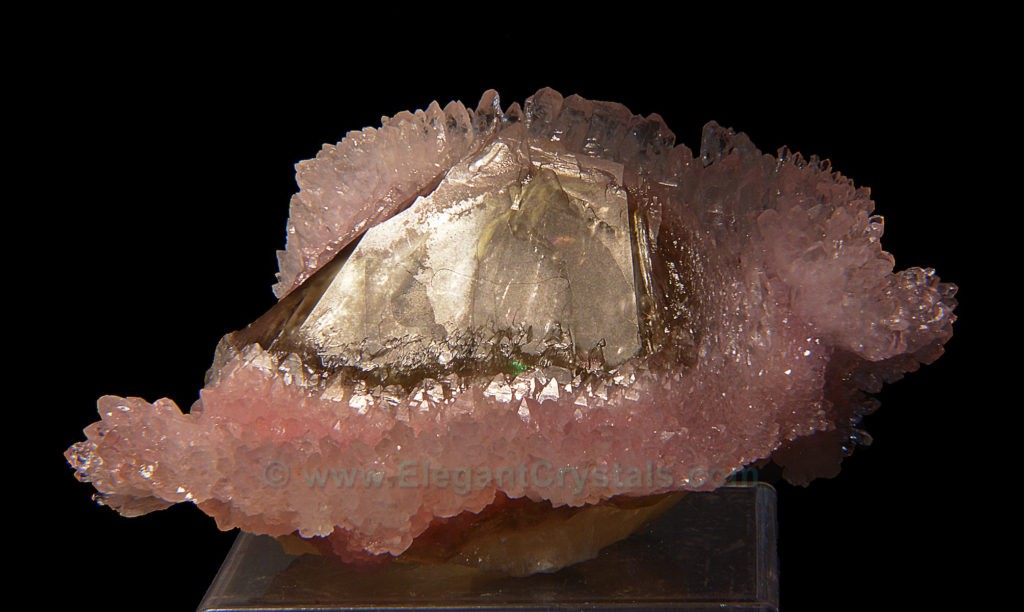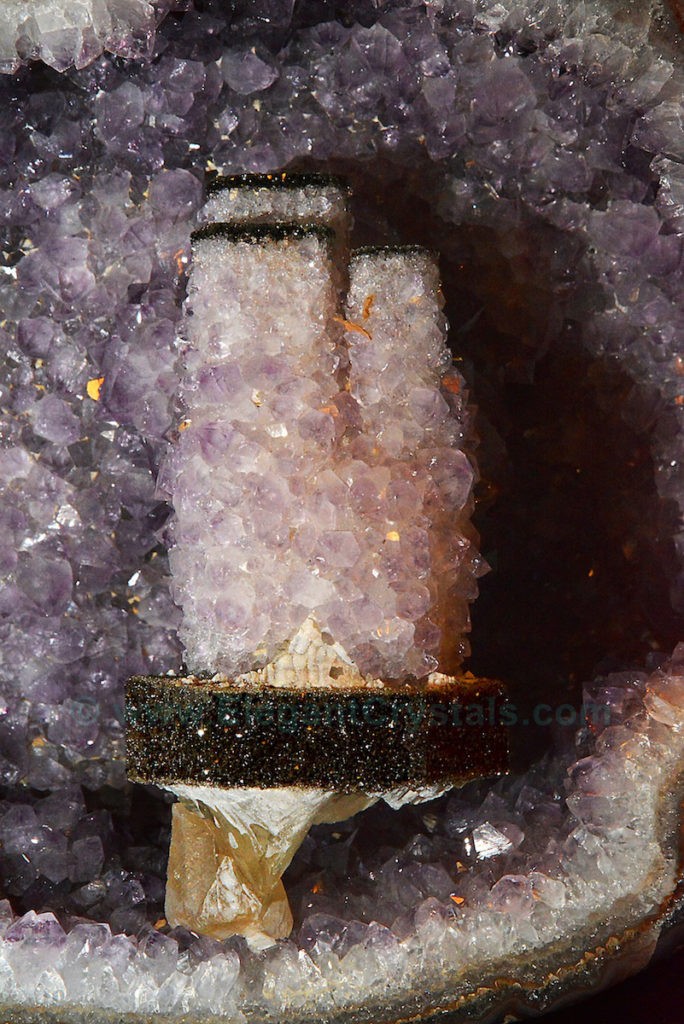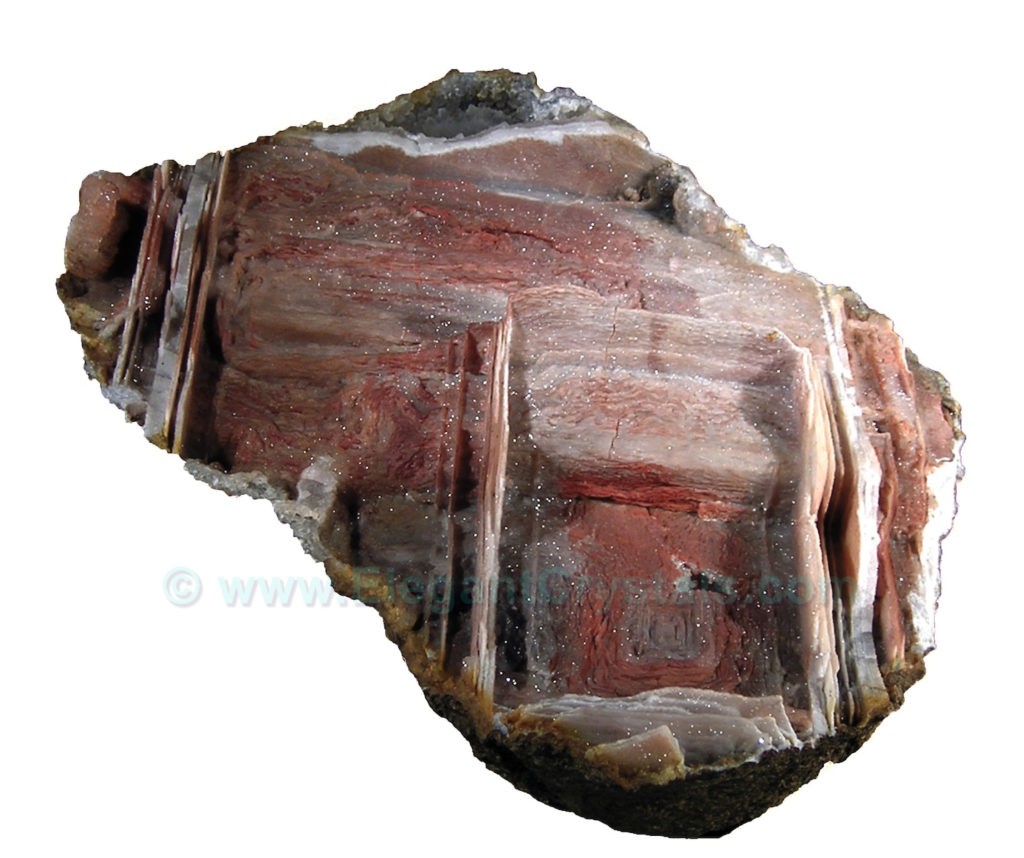CHAPTER 12
DRUSY QUARTZ

Picture #82
4-inch-wide Brazilian Smoky Quartz with
Drusy Rose Quartz Crystal Skirt
Drusy quartz refers to small crystals, generally with facets under 1/4” wide.
This unusual and expensive crystal specimen came from Rio Do Sol, Brazil.
You are looking at a smoky citrine crystal surrounded by a skirt of rose quartz.
The whole piece is about four inches wide with tiny pink crystals roughly 1/2 inch high.
Every year a few crystals like this are found in Brazil.
This is truly an expensive item.
Prices for a similar specimen would start in the thousands of dollars and go up into the tens of thousands.
This is based on the beauty of the piece and its extreme rarity.
When I see this kind of formation, I think of ballet dancers wearing their little tutus, such delicate skirts of pastel colors.
When you take a close look at the rose quartz, please notice that all of the little pink crystals are lined up nearly parallel, much like tiny city skylines.

Picture #83
3-inch-tall Detail inside Uruguayan Amethyst with Calcite
Here is a complicated crystal shape found inside an amethyst geode that was mined in Uruguay.
This form shows alternating layers of quartz, amethyst and calcite.
At the bottom of the image, you can see a perfect golden calcite crystal.
Above it is a projecting shelf formed by a hexagonal flat calcite crystal coated with tiny black calcite micro-crystals.
The miniscule drusy crystals create a beautiful sparkling star-like effect in sunlight.
This black hexagonal platform supports a series of three elongated calcite crystals that are coated by pale lilac amethyst.
In the background, you can see the lilac amethyst wall of the geode.
The area shown in this photo probably represents about one quarter of the inner surface of the geode.
When we find this type of formation, the geode will typically contain one large stalactite inclusion.
That particular anomaly gives this specimen its unique character and high value.

Picture #84
12-inch-wide Moroccan Quartz Pseudomorph with Pink Hematite
I would like to show you my all-time favorite weird shape from Morocco.
This complex epimorph, sometimes known as a pseudomorph, is over one foot wide and about six inches thick.
On the back, there is a small geode of pure amethyst crystals.
The front is a crystal that has formed in alternating layers of quartz, hematite and halite.
While it was growing, the quartz coated the halite (rock salt crystals), which later dissolved away.
Because the rock salt forms cubic shapes and rectangles, the later growth of quartz created sheets of drusy crystals over cubes.
As the halite dissolved away, what remained resembles architectural ruins of plazas and walls.
Because the sheets of crystal are only millimeters thick, they are extremely fragile.
I suppose that the miners probably had trouble bringing this specimen out of the ground.
Most of the thin quartz sheets have broken away, leaving what looks like an architectural blueprint in the remainder of the specimen.
The closer you get to this amazing piece, the more detail can be seen.
The multiple layers of one or two-millimeter thick crystals indicates that this beautiful rock needs to be handled delicately.
